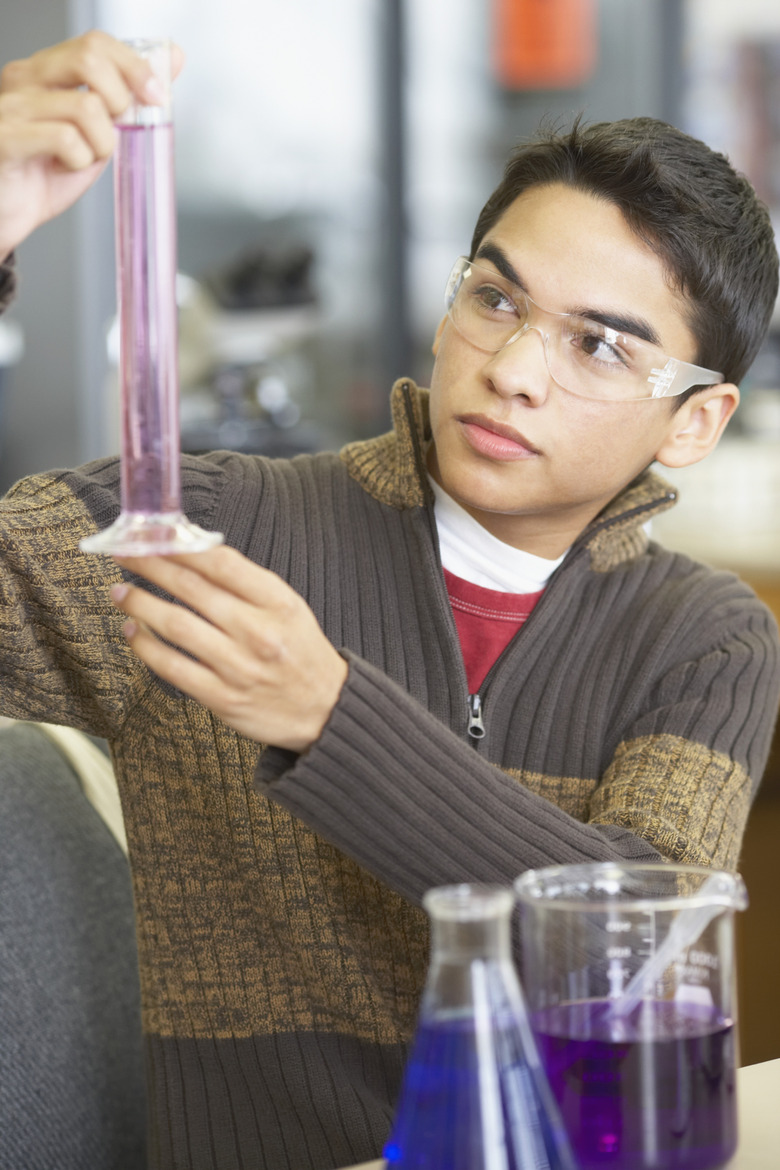Safe Combustion Reaction Experiments
Combustion is an exothermic reaction in which a chemical is oxidized to produce heat. The chemical is called as fuel and the substance that oxidizes it is called as oxidant. The most common types of fuels burned today are hydrocarbons used in vehicles and power plants. Many combustion reactions are useful for learning about chemistry, and energy transfer.
Naphthalene
Naphthalene
The burning of naphthalene is one of the more well known school experiments for combustion reactions. This is because naphthalene combustion involves a simple burning reaction which involves simple burning procedures. The reaction involved is represented by the reaction equation: C10H8 + 12 O2 → 10 CO2 + 4 H2O + energy. In layman's terms, Naphthalene plus oxygen will burn, and produce carbon dioxide and water. This exothermic reaction that involves releasing heat in the form flame and also produces carbon dioxide gas.
Methane
Methane
One of the simplest combustion reactions involves the burning of methane. The most common form of methane is bio-gas which is used in heating and cooking applications. The reaction involved is: CH4 + 2 O2 -> CO2 + 2 H2O + energy. Translated, this combustion reaction says that Methane plus Oxygen will burn and produce Carbon-dioxide, water and energy. The reaction takes place in the presence of air and leads to the production of heat with the release of carbon-dioxide and water.
Hydrogen
Hydrogen
The Di-hydrogen molecule is easily flammable and releases heat and water vapor. The reaction involved is: 2 H2 + O2 → 2 H2O + heat energy. Hydrogen burns explosively with air or chlorine gas, to produce either H2O or HCL respectively. The reaction with oxygen is called as oxidation and reaction with chlorine is called as chlorination. The combustion of hydrogen in air can lead to the emission of ultraviolet light, which is invisible to naked eye. Thus, when this experiment is performed in a classroom, students must be instructed to protect their eyes.
Combustion of Wood
Combustion of Wood
Wood is chemically related to sugars. Poly-saccharides contain a basic molecule with a formula very similar to glucose. It is composed of a cellulose molecule (C6H10O5), which is a chemical equivalent of glucose. Thus, the reaction of respiration can also represent the reaction of cellulose as well. It is: C6H12O6 + 6 O2 → 6 CO2 + 6H2O. In layman's terms, this chemical reaction is: Cellulose plus Oxygen burn to produce carbon-dioxide and water.
References
Cite This Article
MLA
Burns, Timothy. "Safe Combustion Reaction Experiments" sciencing.com, https://www.sciencing.com/safe-combustion-reaction-experiments-10027198/. 24 April 2017.
APA
Burns, Timothy. (2017, April 24). Safe Combustion Reaction Experiments. sciencing.com. Retrieved from https://www.sciencing.com/safe-combustion-reaction-experiments-10027198/
Chicago
Burns, Timothy. Safe Combustion Reaction Experiments last modified March 24, 2022. https://www.sciencing.com/safe-combustion-reaction-experiments-10027198/
